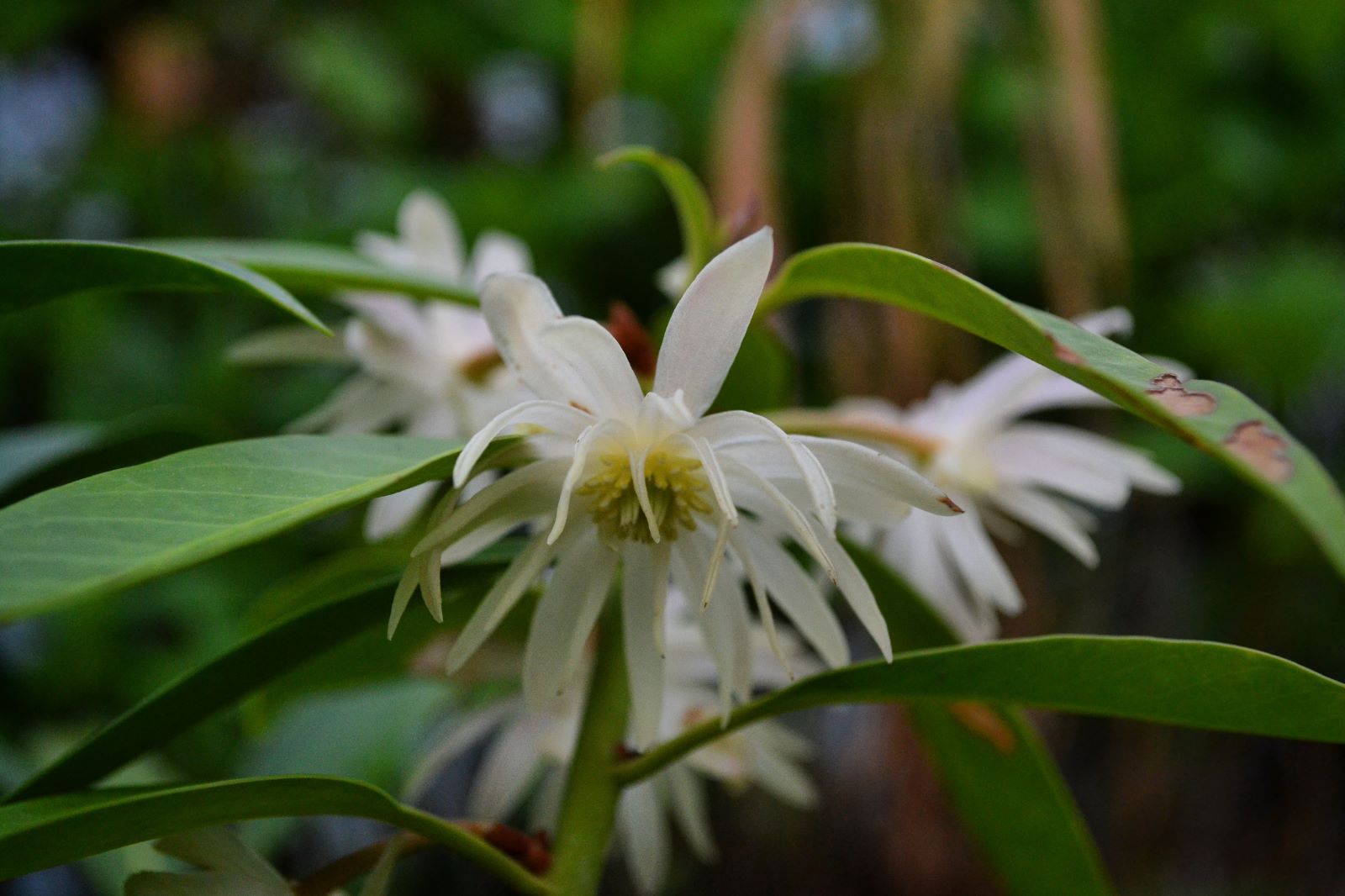Illicium majus
Credits
Article from New Trees by John Grimshaw & Ross Bayton
Recommended citation
'Illicium majus' from the website Trees and Shrubs Online (treesandshrubsonline.
Genus
Tree to 20 m tall. Branchlets brownish or purplish when young, lenticellate; grey when older. Leaves in false whorls, sub-leathery, 5–15 × 1.5–4.5 cm, oblong-lanceolate to oblanceolate, base cuneate, apex acuminate; midrib prominent below, slightly impressed above, six to nine secondary veins on each side of the midrib; petiole 1–2.5 cm. Flowers axillary or subterminal, solitary or in fascicles of two to four, borne on peduncles 1.8–4.5(–6) cm; perianth segments 15–21, white or pink, the outermost pellucid-glandular, the inner ones fleshy, the largest 8–15 × 4–9 mm; stamens 12–21; follicles (9–)11–14, 4–5.5 mm long at flowering. Follicetum 4–4.5 cm diameter; follicles 12–25 × 5–15 × 3–5 mm, apex abruptly narrowed and elongated into a 3–7 mm beak. Flowering April to June, fruiting July to October (China). Yuhu et al. 2008.
Distribution China Guangdong, Guangxi, Guizhou, Hunan, Yunnan Vietnam
Habitat Mixed forests, thickets, rocky slopes, along riverbanks.
USDA Hardiness Zone 8-9
RHS Hardiness Rating H3
Conservation status Not evaluated (NE)
At present Illicium majus is scarcely known in cultivation, but it is strongly recommended by Tom Hudson (pers. comm. 2007; Hudson 2004) for its showy pale flowers in spring. It has been grown at Tregrehan (and in other Cornish gardens) for several years, from seed originally collected in China by the New Zealander Garry Clapperton (GWC 0224). It has reached 2 m tall at Tregrehan and is growing well.

